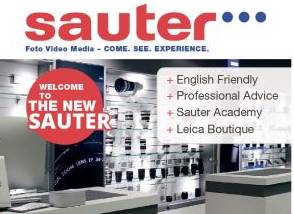Augmented Reality?
If you had walked around the stands at InsideAR last week here in Munich, you would have likely been astounded at both what was available, and more importantly, what was on the horizon in the world of AR (Augmented Reality).
Because the event was hosted by Metaio, its products were firmly center stage during the event, and the major unveiling that took place on the first day was the release of its new platform Metaio 6.
The Merriam-Webster Dictionary defines Augmented Reality as, “...an enhanced version of reality created by the use of technology to overlay digital information on an image of something being viewed through a device (as a smartphone camera).” To get an idea of how far we have come in the world of AR, you need only to look at some examples of the technology from several years ago. In this ever-changing field, those few years might seem like an eternity. The best place to start is with Lego Digital Box, which has been featured for years in Lego’s shops. It might be the most accessible way that people not involved in video game development or automobile technology have actually come into contact with Augmented Reality. By holding the box with Lego’s product in it up to the cameras, the Lego Digital Box creates a 3D image of the toy that is inside and places it onto the screen.
Here, you can see for yourself: Compared to what technology is available today, the Lego Digital Box is clearly from an earlier era of technology. The cameras are stationary and simply seeing the 3D version of the toy in your hand on the screen is the whole point of the tool. Fast-forward a few years, and now you have the cameras inside of your mobile devices.
Here is a more recent application of AR shown in a video for IKEA:
In this case, you have a photo of a room, and with this technology you can superimpose a 3D image of a piece of furniture into that room. The practical application is that you can see how that piece of furniture looks in your home before ever making the purchase. But how does it work? How does the camera process the information it is taking in and recreate it on the screen? To comprehend that, you need to know a bit about tracking.
Tracking is how the camera takes in data and computes the spatial relationships to objects in a room. Although there are various sorts of tracking, the important thing to remember here is that the most cutting-edge tracking technology is often a hybrid of different tracking types. The core of the brand new Metaio 6 platform is its innovative tracking technology, in addition to all of the surrounding features that are included. However, it is not a one-size-fits-all tool. You can pick and choose which sort of tracking best fits the application you need.
That available tracking pipeline is part of how this platform will push the envelope of innovation as so many of this company’s products already have in the past. Where do we go from here? At this point, it is not standard to have a 3D camera already installed in a mobile phone or a tablet. That time is certainly coming, though, as Augmented Reality is constantly more commonplace. While devices continue to get smaller and the real world applications of these technologies become more obvious, the era before this Augmented Reality explosion is looking more and more old-fashioned. How often can you see the future of an industry at one single event?
At InsideAR, we had that very thing.
Metaio 6 is that future.

